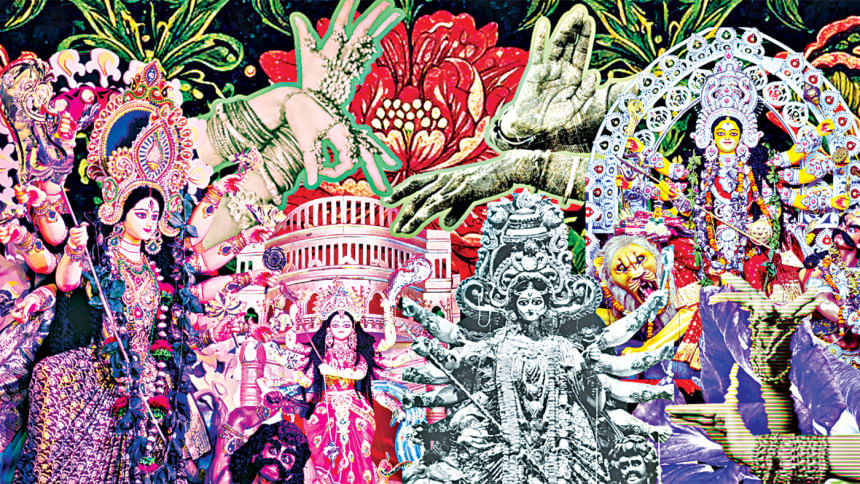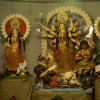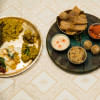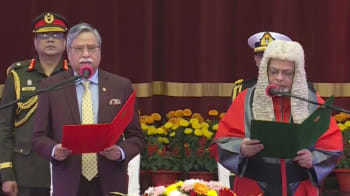The nine faces of Durga and books that reflect each avatar

The scent of marigolds hangs heavy in the air, mingling with the rhythmic clash of cymbals and the murmur of crowds waiting for a glimpse of the goddess. With the festive season returning and the air thick with dhaak beats, it is impossible not to feel the excitement of Durga Puja. Here are nine books that echo the spirit of Durga's nine faces, each reflecting the qualities the goddess embodies.
Shailaputri: The daughter of mountains
Arronyer Dinratri (1968)
Sunil Gangopadhyay
Like the mountain she is born of, Shailaputri teaches us to remain rooted, unshaken by the storms that swirl around us. Have you ever longed for a stillness so profound that it anchors you even when everything around you threatens to collapse? As the reincarnation of Sati, she embodies inner fortitude. Arronyer Dinratri reflects this spirit in an unexpected way: four men flee Calcutta's bustle for the forests of Palamau. They arrive with arrogance, carrying the weight of their urban education like a badge. Yet the wilderness does not bow to them. It strips them bare and humbles their certainties. What begins as an escape turns into a confrontation with their own fragility, showing that true strength lies not in dominance but in grounding oneself and facing reality.
Brahmacharini: Mother of devotion and penance
Of Women and Salt (2021)
Gabriela Garcia
She walks barefoot across rough ground, the beads of a rudraksha mala hanging by her fingers. Being the ascetic form of Durga, she is worshipped for her austerity and steadfast faith. What could be more humbling than a goddess who teaches us that true strength is not in grandeur, but in the grit to keep walking when the path feels endless? Spanning generations of Cuban and Mexican women, the novel traces migration, addiction and motherhood—each woman carrying her own burden of struggle yet pressing forward with unrelenting will. Like Brahmacharini, these women demonstrate that perseverance transforms struggle into an act of devotion—a radical form of love and strength.
Chandraghanta: Destroyer of demons
Debi (1990)
Humayun Ahmed
When Parvati wields a bell-shaped crescent moon upon her forehead, she becomes the warrior goddess whose roar scatters demons and whose presence terrifies evil itself. She is worshipped as the embodiment of righteous anger, a reminder that sometimes the only way to face darkness is to confront it head-on. Have you ever felt that moment when fear threatens to swallow you whole, and you wish for a power within to rise and fight back? Debi channels this very energy through its haunting heroine, Ranu. Gifted—or cursed—with psychic abilities, Ranu can sense truths others cannot, a burden that isolates her yet gives her uncanny strength. The novel does not present her as a polished warrior but as a fragile, complex woman who wrestles with her gift while navigating scepticism and the raw edges of human fear. Like Chandraghanta, Ranu embodies a paradox of vulnerability intertwined with ferocity.
Kushmanda: The cosmic creator
The Alchemist (1988)
Paulo Coelho
The goddess whose radiant smile gave birth to the universe. She embodies the light that awakens possibility in even the darkest corners. The Alchemist mirrors this celestial force. Santiago, a shepherd boy, leaves the comfort of his flock to chase a treasure that feels both mythical and inevitable. Across scorching deserts and vibrant markets, he deciphers omens, meets alchemists, and learns that the magic of creation lives not only in the world but also within himself. Just as Kushmanda animates the universe with her energy, Santiago's journey reminds us that embracing curiosity, courage, and wonder can turn ordinary life into something miraculous.
Skandamata: The mother of a warrior
Soldier Sailor (2019)
Claire Kilroy
Smoke curls from incense, drums beat in the distance. Amid the golden glow, she sits serene, her hands cradling her son Kartikeya as if the world's weight rests in her palms. Soldier Sailor reflects that same maternal power in an intensely personal way. Told as an inner monologue from a mother to her sleeping child, the novel plunges into the brutal, visceral war of early motherhood—the exhaustion, the isolation, and the seismic shift in identity that comes with raising a young child. Like Skandamata, the mother embodies strength through presence, guiding and nurturing silently. True courage, the book reminds us, often resides in these quiet, uncelebrated acts of love.
Katyayani: The fierce warrior
The God of the Woods (2021)
Liz Moore
The forest breathes around her, shadows twisting like lurking demons, yet she stands unmoved. Katyayani teaches us to summon courage, confront danger, and act decisively when fear threatens to paralyse us. The God of the Woods channels this same relentless spirit. When Barbara Van Laar disappears from her family's summer camp, the town and its residents are forced to reckon with long-buried secrets and moral dilemmas. As the story unfolds, each character must wrestle with the shadows within themselves—greed, fear, and guilt—mirroring Katyayani's call to stand firm and act against injustice.
The scent of marigolds hangs heavy in the air, mingling with the rhythmic clash of cymbals and the murmur of crowds waiting for a glimpse of the goddess. With the festive season returning and the air thick with dhaak beats, it is impossible not to feel the excitement of Durga Puja.
Kalaratri: Goddess of courage
Drive Your Plow Over the Bones of the Dead (2009)
Olga Tokarczuk, Antonia Lloyd-Jones (Translator)
Her skin gleams like a midnight storm, eyes blazing with fearless resolve, as she rides into battle with a sword that cuts through shadow and fright alike. She is the tenacious face of Durga who destroys evil energies and liberates those trapped by fear and attachment. Legends say she appeared when all else failed, her presence so intense that even the bravest trembled, reminding us that after every dark night comes a bright dawn. The novel channels that same audacious courage. It follows Janina, an elderly woman living in a remote Polish village, who begins investigating a series of suspicious deaths of local hunters. Alone, dismissed and considered eccentric by her neighbours, Janina relies on her sharp intellect, moral conviction, and fearless determination to uncover the truth.
Mahagauri: Goddess of purity
The Remains of the Day (1989)
Kazuo Ishiguro
Holding a trident and a damaru, she is the radiant form of Goddess Parvati after she cleansed herself of the darkness and ashes from her ferocious battles as Kalaratri. Mahagauri teaches us to release anger, resentment, and attachments that cloud the mind. Ishiguro's The Remains of the Day captures this same quiet strength through Stevens, an English butler whose life is shaped by rigid devotion to duty and an unwavering pursuit of perfection. As he journeys across the countryside, revisiting memories of loyalty, missed opportunities, and unspoken emotions, the novel lays bare the subtle, sometimes painful costs of a life lived in restraint.
Siddhidatri: The bestower of supernatural powers
Taranath Tantrik Shomogro (2019)
Bibhutibhushan and Taradas Bandyopadhyay
She sits serenely on a lotus, guiding seekers toward wisdom, insight, and mastery over the unknown. She teaches that true strength is not just in conquering forces outside but in understanding the unseen. This essence comes to life through the enigmatic figure of Taranath, a tantric practitioner living on the edge of the natural and supernatural. The collection includes stories of Taranath Tantrik and the novel, Alatchakra, where he recounts eerie, thrilling encounters with spirits and mystical phenomena. Like Siddhidatri, Taranath navigates the delicate balance between fear and knowledge, showing that actual power comes from insight and discernment.
Agnila Roy is hoping Goddess Durga will lend her an extra pair of arms this year, preferably before puja ends.

 For all latest news, follow The Daily Star's Google News channel.
For all latest news, follow The Daily Star's Google News channel. 








Comments